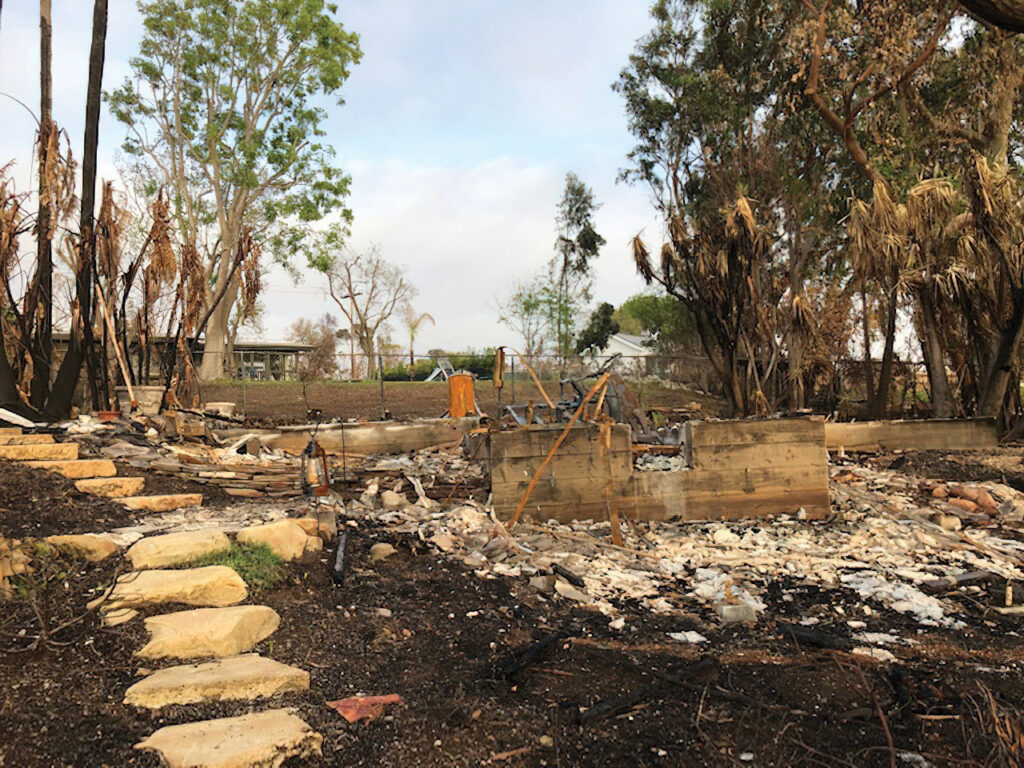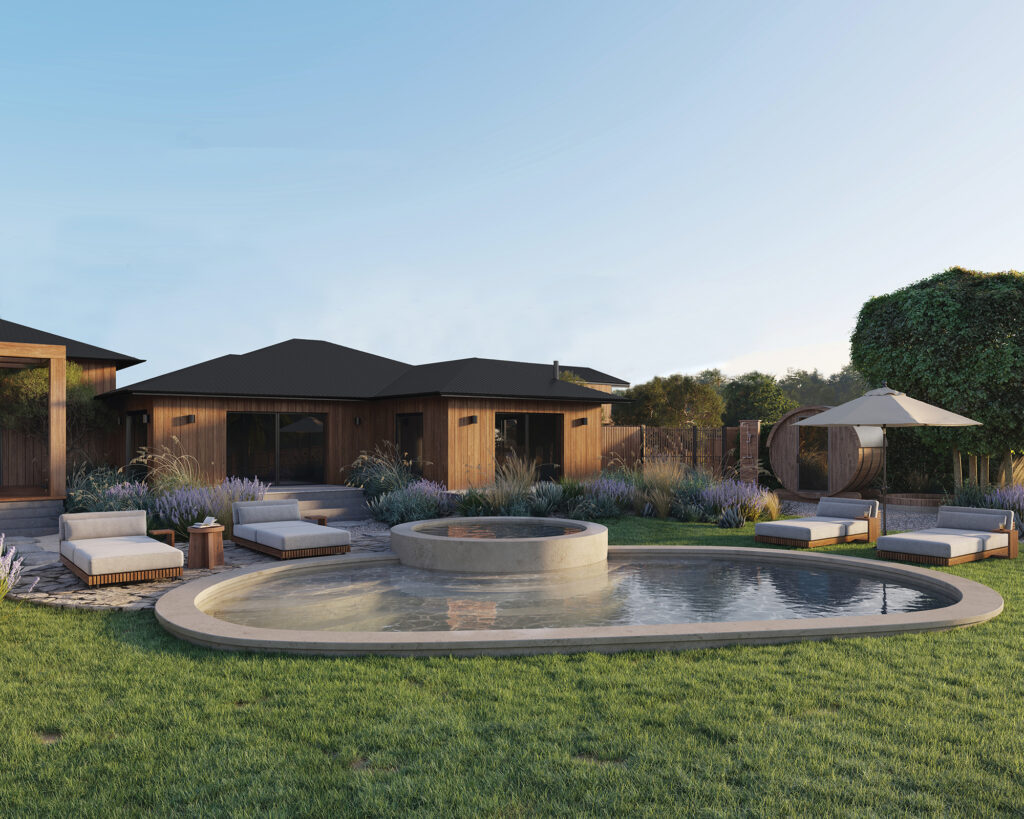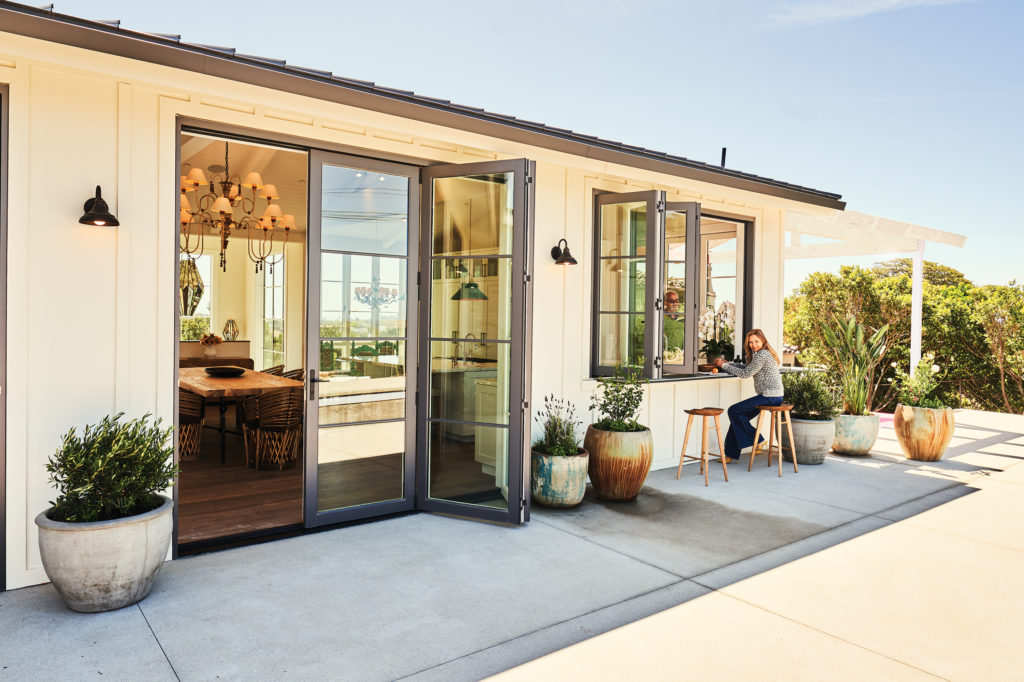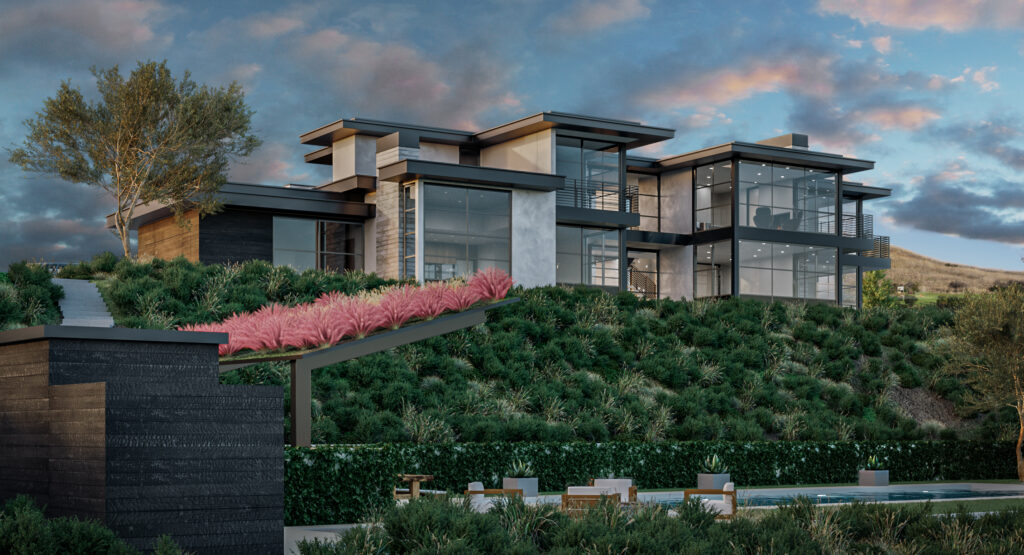
The New Rules of Fire-Resilient Home Design, According to a Top Malibu Architect
Architect Doug Burdge knows from experience: He’s lost homes to fires in Malibu and has helped numerous clients rebuild after losing theirs. Here’s his blueprint for building better.

A beautiful example of a “vent-free” home, clad in fire-resistant materials with abundant defensible space. Photo by Berlyn Photography 2023.
Architect Doug Burdge’s life and career have been shaped by the beauty and promises of Malibu—and by the wildfires that have come through the area for centuries. For more than three decades, he has lived and worked in this stunning coastal community, creating architecture that harmonizes with its natural beauty in some 300 homes and businesses. Along the way, Burdge has lost his own homes to fires and built homes for others who’ve lost theirs. His decades of learnings from loss have given him an intimate understanding of the risks and of the resilience and architectural intelligence required to live where fires are an inevitability. “You’re living in a fireplace,” says Burdge. “Whether it’s tomorrow or next year or 10 years from now, the fires will return.”

M.K. Sadler
Burdge’s story begins in Encino, where he grew up surrounded by the orange groves and open spaces of the San Fernando Valley. As a child, he found his love for the outdoors through scouting, earning the rank of Eagle Scout and learning the importance of conservation. “We camped every weekend,” says Burdge. “I was taking conservation classes when I was an 8-year-old.” After studying architecture at USC, Burdge’s early career took him through Los Angeles to Cabo San Lucas, where he learned about hurricane-resilient design, but it was in Malibu that Burdge faced his first encounter with wildfire devastation.

Mark Lohman
In 1993, the Old Topanga Fire swept through the area, destroying more than 200 homes. Despite the risks, Burdge and his wife bought the lot on which an unfortunate casualty of that fire once stood and built his first Malibu home there for his family. It was an ode to classic Spanish haciendas. From custom light fixtures forged in Guadalajara to handmade tiles sourced from local artisans, every detail reflected their vision. “That house was more than a home,” Burdge explains. “It was a testament to what thoughtful design could achieve.”
They moved out of that house and built another home, this time a modern interpretation of a red Vermont-style farmhouse. The red farmhouse burned down in the Woolsey Fire in 2018. So did a vintage Airstream Burdge used as an office, along with a lifelong collection of memorabilia. Then, the hacienda burned down earlier this year when the Palisades Fire surged for days, destroying thousands of structures in the conflagration of a scale and ferocity the city had never seen. “When you’ve spent countless hours perfecting every detail of a home, only to watch it burn, it changes you,” he says. “But it also drives you to do better—to build smarter, stronger, and more in tune with the environment.” He points to the 1933 Long Beach earthquake as a tragic reckoning that caused the earthquake codes in California to be hardened. “It took a disaster, unfortunately, to create a new road to be built and a new avenue forward.”

Courtesy of Melissa Arian
Burdge is passionate about creating a “Malibu Standard”—a global benchmark for fire-resistant design. “Why shouldn’t Malibu lead the way?” he asks. “This is a world-renowned community. Let’s make it a model for resilience.” His approach is as pragmatic as it is visionary. He combines lessons from his personal experiences with insights from other fire-prone regions like Australia and Mexico. He’s also a strong advocate for community-based solutions, emphasizing that resilience starts at the neighborhood level. “Your community is your first line of defense,” he says. “We need to empower people to protect their homes and support each other.”

Courtesy of Burdge Architects
As Malibu and other parts of the West face increasing wildfire threats, Burdge’s vision offers a roadmap for living in harmony with nature while mitigating risks. Here, we’ve distilled his wisdom into “The New Rules of Building”—a guide for architects, homeowners, and anyone committed to building better.
The New Rules of Building

Courtesy of Burdge Architects
1. Take the Long View with Legacy
When you design a home, you’re creating more than a structure—you’re building a legacy. Homes should stand the test of time and nature, honoring the effort and emotional investment that go into their creation. Having built numerous houses for clients who lost their homes to fires, as well as losing his own, Burdge has intimate knowledge of the emotional and psychological toll of loss and rebuilding.
2. Change Your Attitude
“Stop thinking of fires as rare events and start designing for their inevitability,” he says. This mindset shift can save lives and homes. Incorporate fire-resistant materials, prioritize designs that protect against fire’s impact, and actively maintain a defensible space.
3. Learn from the Past
Learn from other communities’ successes and failures to improve your own fire resilience. “Every fire teaches us something,” says Burdge, pointing to lessons from Australia, which has faced its own devasting fires, referred to as bushfires. “If you really want to do this right, there are already many case studies out there.” Burdge staff architect Carmel McFayden has worked with contacts in Australia to incorporate their learnings into the California builds.

Doug Hill
4. Bring in the Private Sector
Governments can’t do it alone. Private architects and builders bring innovation and efficiency to the table. Public-private partnerships can accelerate the adoption of fire-resilient practices. Without architects involved in refining codes, “It’s like the generals making plans without talking to the soldiers,” Burdge says.
5. Get Rid of the Kindling
Look around your property, Burdge advises, and get rid of what he calls the kindling. “The kindling is all the wood fences and railroad ties and all the things that we see burning up. And that goes for that little shed your neighbor has next to your property line.” Replace them with fire-resistant materials and create defensible space. Small changes can make a big difference in reducing risk. But it needs to be a collective effort, or else the outliers will weaken the defenses of the whole neighborhood. Flammable materials next to the house can combust and then burn the adjacent structure. Don’t store plastic bins, lumber, or anything flammable near your house.
6. Communities Should Have a Civil Defense Mindset
“The formation of a community brigade is one of the most important things any neighborhood in the wildland urban interface (WUI) needs to locally implement. Not just to help fight the actual wildfires but also to implement fire hardening practices during ‘non disaster’ everyday normal living times.”

Rendering courtesy of YouSee Studio
7. Work with Nature
“You can move next to an area with flammable chaparral, but you need to manage that chaparral and coexist within it,” Burdge says. Responsible vegetation management and thoughtful building placement can reduce fire risk while preserving ecological balance.
8. Build Better, Even Without a Fire; Treat Resilience as a Year-Round Priority
Fire safety isn’t just for disaster recovery. Proactively implement designs that protect against fire, ensuring safety and longevity for future generations. “Malibu is one of the most world-renowned cities. Why don’t we create a Malibu Standard of fire resiliency? If we don’t have a fire today, it could be next month, or every 10 years, but it will happen,” says Burdge. Of all the towns to have the most hardened Malibu resiliency program, it should be Malibu.
An Idea House Born from the Fires

Thomas J. Story
Our 2022 Sunset Idea House was a Doug Burdge rebuild of Andrea Tennant’s home that was lost to the Woolsey Fire in 2018. It incorporates heat-resistant windows, metal roofing, and flame-retardant siding. “We honored the original home in a style we refer to as ‘transitional.’ It isn’t too modern or too traditional. It’s a family home that’s made for entertaining and enjoying the beautiful Malibu climate,” Burdge says. “And in many ways, it’s better and more resilient than the original home.”
The New Non-Negotiables for Fire-Resistant Homes

MGI Designs
Burdge Architects’ work has led it to adopt and advocate for a series of best practices to “harden” homes against wildfires. Here are the new best practices.
Exterior Wildfire Protection Systems
Automated sprinkler systems on both roofs and eaves, incorporating fire retardant foam, remote monitoring and activation, and battery back-up, such as Frontline Wildfire Defense.
Fire-Resistant Features
Fire-rated caulking, non-combustible decking, and onsite water sources, like ponds or tanks.
Strategic Landscaping and Defensible Space
Choose low-risk plant material and space planting away from structures to avoid direct flame contact.
Class A Roofing
Use fire-rated materials, like metal, tile, or asphalt shingles.
Ember Defense
In new builds avoid crawl spaces and attic vents. Without vents, the chances of ember intrusion, a leading cause of house fires during wildfires, is greatly reduced. Use non-combustible siding (fiber cement, stucco, stone). On existing structures, install fine mesh screens on vents, and seal eaves and soffits.
Fire-Resistant Windows
Dual-pane tempered glass with fire-rated frames and optional shutters or screens. Avoid vinyl, which can melt and combust.
Consider Alternate Building Systems
Traditional wood framing is not your only option. Concrete-clad Blue Planet BP2 panels are an energy-efficient and fire-resistant option.
These steps, paired with meticulous design and construction, can make the difference between losing and protecting a home during a wildfire.
